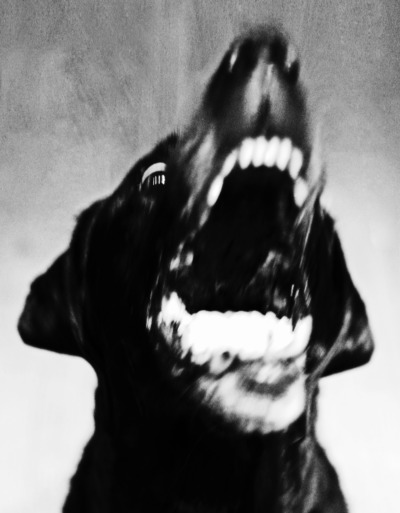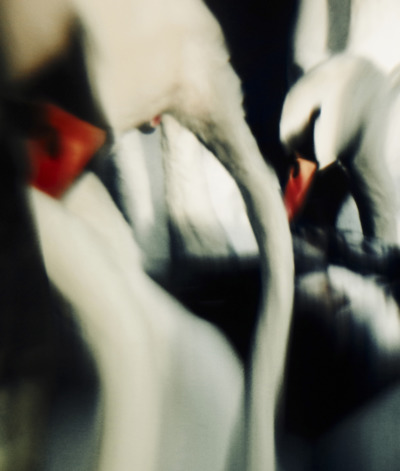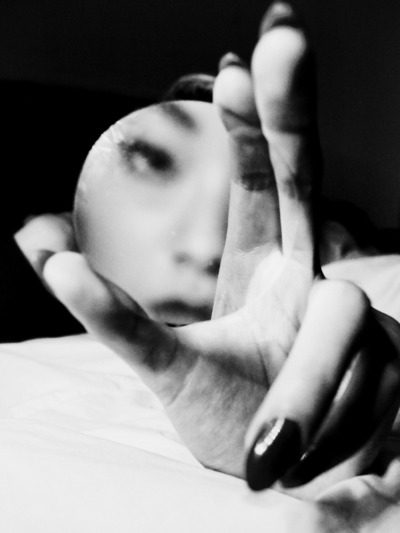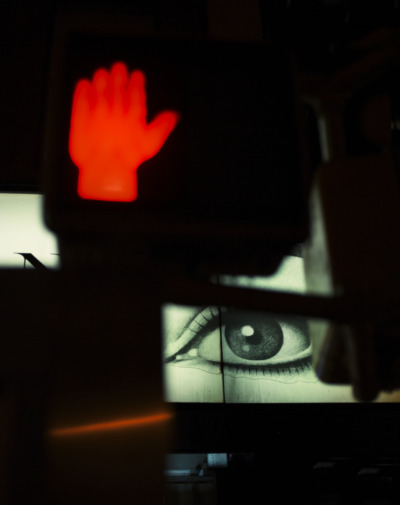Jack Davison – Photographs
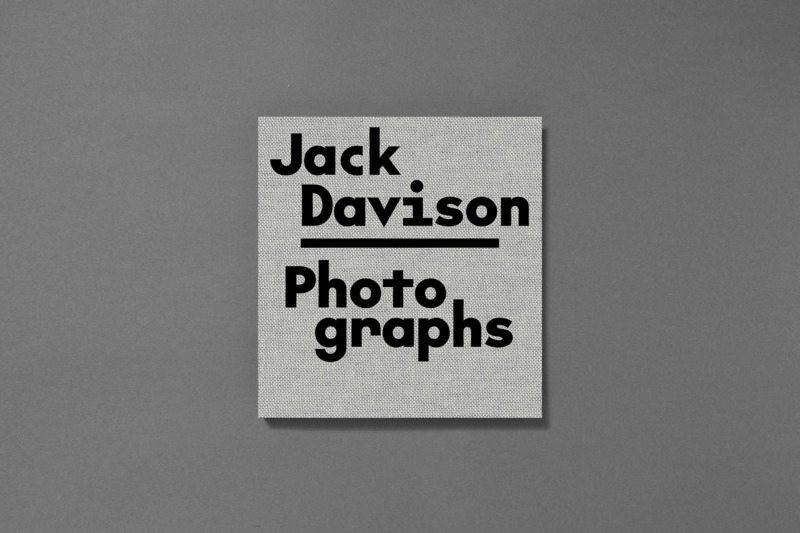
Amongst a plane of absolute black and angular, near-abstract forms of blue and white, several leaves of a Nepenthes Alata (a carnivorous, tropical plant native to the Philippines) lean forward just enough to leave the obscurity of the dark. Illuminated by perfect chiaroscuro, red veins that meander through the frame connect each leaf tip to the plant’s predatory organs, all of which is rendered in precise, photographic clarity.
Plants are not however the crux of Jack Davison’s first book. Titled Photographs and published by Loose Joints, it brings together a selection of photographs from a monumental twelve years of work. Yet how that particular plant is photographed is emblematic of his work; it is the constant oscillation between veiling and unveiling, the thoughtful treatment of light and shadow and the loading of optical trickery, forcing us to ceaselessly work to establish perspective and meaning (amid other details), that denotes a photograph made by Jack Davison.
In another image, an amber yellow building is set to the right of another decorated in a sage-like green. Deliberate, tight framing truncates line and colour and the midday light casts defined shadows to the extent that all depth is erased and the entire photograph becomes a flattened and painterly abstraction. It would be an arduous task to draw any relationship to a Nepenthes Alata, but we can find commonality between the two photographs through Davison’s repeated ordering of ambiguous spatial planes.
The miscellany of subjects found in the book, from faces and animals to billowing clouds and architectural details, are offset by guidance from such visual mannerisms that allow us to navigate through the lyrical pages without becoming preoccupied with their arbitrary character. This cohesion built from method rather than theme is underpinned by Davison’s education in literature, something that is imbued into the photographs he makes and his poetic sensibility further coalesces a book that otherwise would feel disparate in its reading.
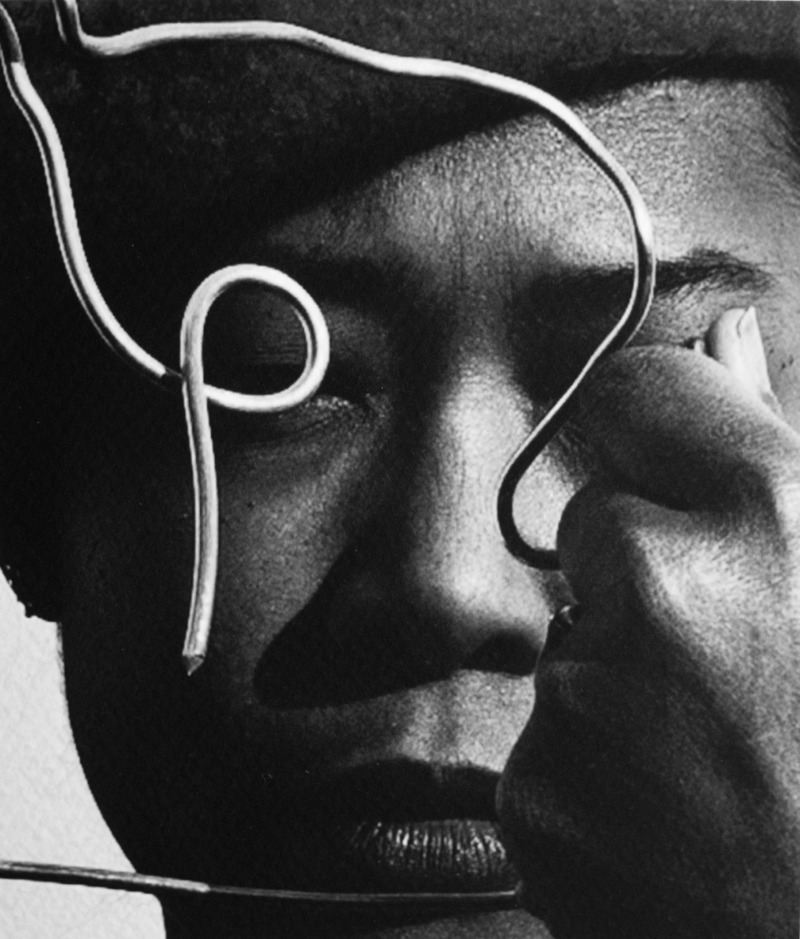
Photographs is also a book that is unapologetically aware of the past, and the array of historical associations that litter the book act as evidence of Davison’s incessant curiosity into the photographic medium. At times, his attentiveness to the patterns and shapes found in the concrete metropolis hint at hours enthralled by Saul Leiter’s exquisite colour photographs from the 1950s, photographs that melded a love for impressionism with the patient observation of structure and an abandonment of perspective in much the same way that Davison does.
And whilst many of the photographs in the book demand our attention to unravel their system of layers, others opt instead to acknowledge the unmediated representation of modernist form. Three sealed poppies, each with innumerable dark hairs lining their stems, are photographed against an off-white wall, and the botanical proximity of the frame alongside the detail that Davison has commanded of the camera make it difficult not to think of Karl Blossfeldt’s Urformen der Kunst (a meticulous book consisting of technically accomplished photographs of plants that translates to Art Forms in Nature), published in 1928.
Coincidentally, like Davison, neither Blossfeldt or Leiter were formally trained in photography. This myriad of historical footnotes that build in a steady manner (numerous odes to Irving Penn can also be teased out) even seem to mirror Davison’s autonomous education of art; far from the framework of an institution and the expectations of post-modern thinking, he is free to let countless histories permeate his work. Davison is always thinking about the past, before re-imagining those thoughts for the present.
Reading Photographs is an unhurried affair, each photograph deftly permitted its own spread (with the exception of a few sparse pairings) which speaks volumes to the importance that Loose Joints and Davison have placed on the individual. This pensive construction is a necessity and it would be easy to become adrift in a book of such divergent material without it. As we near the end of Photographs, there arises a feeling akin to that of getting to know someone. We become evermore familiar with Davison’s likes, dislikes, his quirks and subdued motifs (the hand and the eye) until we know, without any doubt, how Jack Davison sees the world.
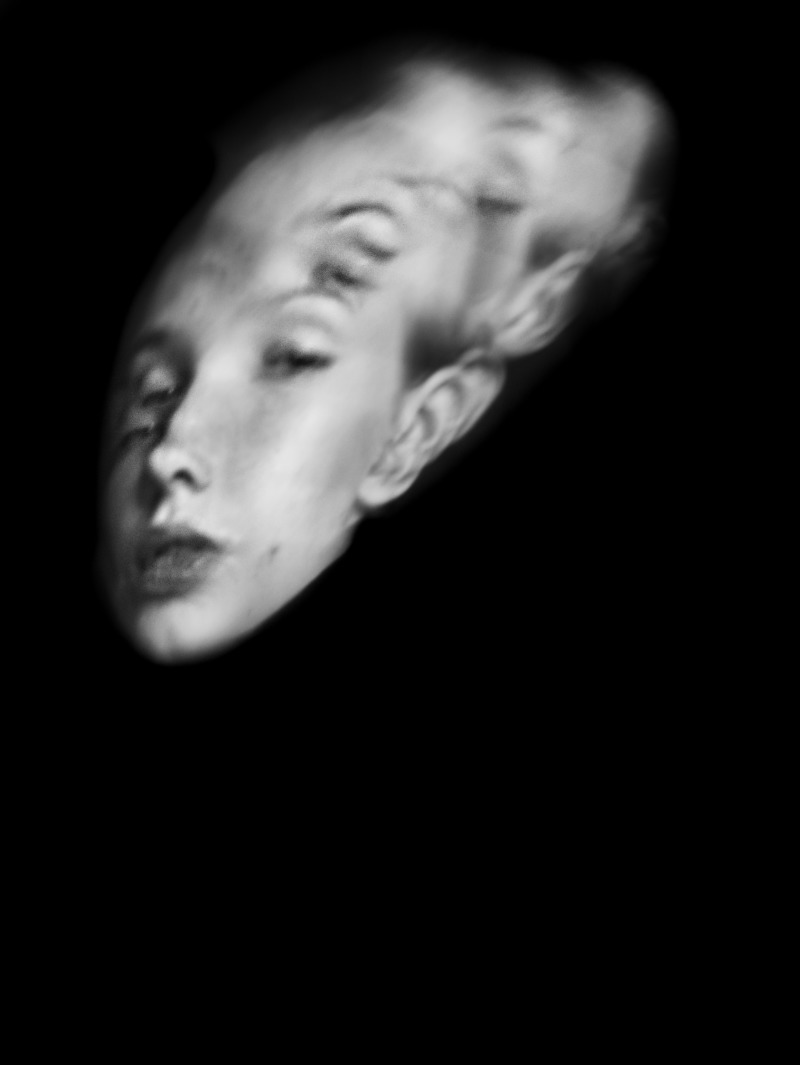
All photographs © Jack Davison, Loose Joints, 2019.

